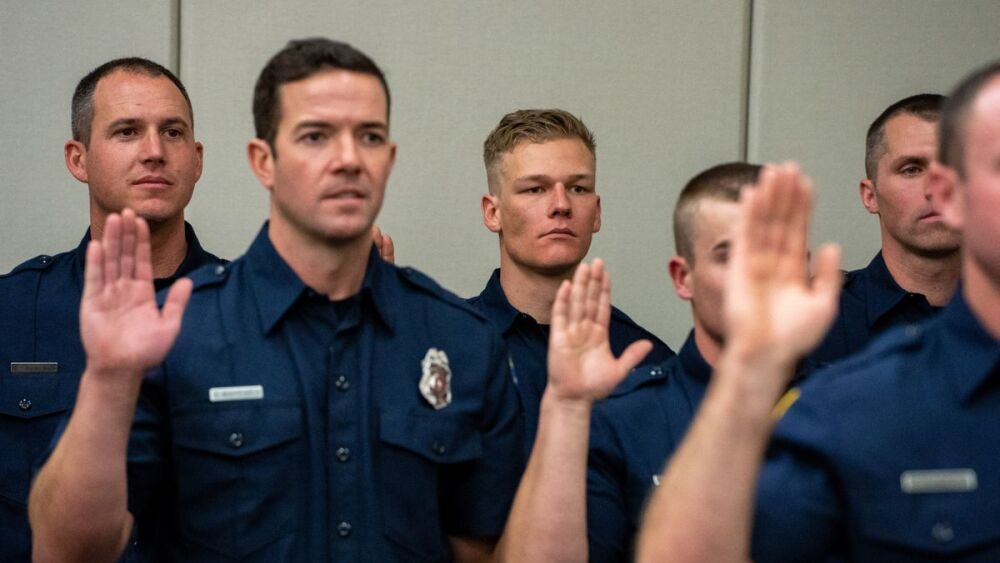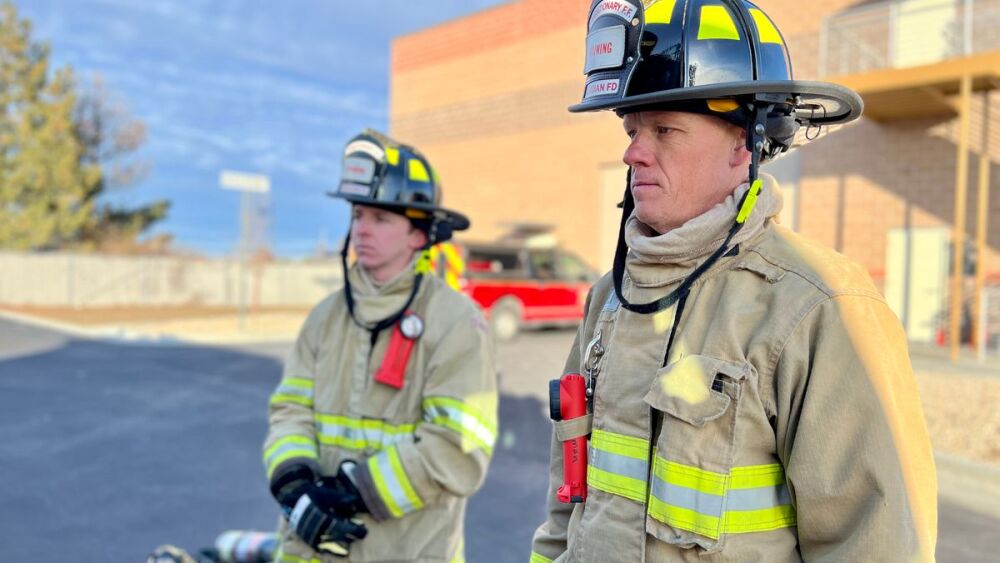I am not a psychologist. I am a professional firefighter. There is, however, a growing body of research about psychological safety that I believe our profession needs to examine as it relates to our work. The importance of psychological safety cannot be overstated or underestimated.
The high-stress environment in which we work can lead to feelings of danger and uncertainty – feelings that can have a significant impact on our mental health. And if firefighters do not feel supported by their team, supervisors and peers, they may be less likely to speak up about their concerns or ask for help, which can lead to further stress and result in dangerous or disastrous outcomes.

The high-stress environment in which we work can lead to feelings of danger and uncertainty – feelings that can have a significant impact on our mental health. And if firefighters do not feel supported by their team, supervisors and peers, they may be less likely to speak up about their concerns or ask for help.
Photo/Kris Blume
Support, inclusion and trust
To promote psychological safety, it is essential to create a supportive, inclusive and trusting work environment. This can be achieved through proportional doses of effective communication, training and leadership:
- Effective communication involves active listening, providing clear and concise instructions, and giving feedback in a constructive manner. This helps to build trust and foster a sense of belonging within the team and organization.
- Training is crucial to ensuring that firefighters are prepared for high-stress situations It is also a good opportunity for team-building and promoting a sense of belonging.
- A leader’s intent must be understood and supported. Platitudes lauding a psychologically safe organization will not suffice. Leader’s must demonstrate the behaviors and attitudes through action, not just used as talking points.
The CRM connection
The predecessor to psychological safety could be considered crew resource management (CRM). CRM is the process used by crewmembers to identify existing and potential threats and to develop, communicate, and implement plans and act to avoid or mitigate perceived threats. Using CRM methods, crews can avoid, manage and mitigate human errors. And as secondary benefits, CRM programs improve morale and enhance efficiency of operations. But anecdotally, that is where the comparison ends, and psychological safety takes center stage.
If we examine the genesis of CRM and how it was implemented in the airline industry, it becomes clear that this was a tool utilized for survival. However, the evolved state of psychological safety goes beyond just surviving to offer a mechanism for thriving in our organizations.
Creating a psychologically safe work environment
There are several factors common to a psychologically safe work environment.
Strong leadership: To begin, strong leadership is essential in promoting psychological safety. Leaders who are approachable and demonstrate concern for the well-being of their team members help to create a positive work environment. Leaders who are able to effectively manage stress and provide support for their team members in high-stress situations help to promote psychological safety and reduce stress and anxiety.
Suppressing the stigma: Another important aspect of promoting psychological safety is addressing the stigma associated with mental health. Firefighters are perceived as strong and capable, and this can lead to a reluctance to seek help or admit to struggling with mental health issues – the fear of looking “weak.” This is particularly problematic in a high-stress environment, as it can lead to further stress, potentially amplifying past trauma. Addressing and quashing the stigma are important in promoting psychological safety, as it allows firefighters to seek help and support when they need it.
Support and resources: It is also important to provide support and resources for firefighters to manage stress and maintain their mental health. This can include access to counseling services, support groups, and mental health training. Regular debriefing sessions after high-stress incidents can also be beneficial in providing a holding environment for firefighters to process their experiences and reduce stress and anxiety.
The right culture: In addition to these measures, it is important to promote a culture of openness and transparency all the way from the newest firefighter to the fire chief. This can be achieved by encouraging firefighters to speak up about their concerns and ensuring that their opinions are valued and taken into consideration. Encouraging open communication and feedback loops help to build trust and foster a sense of belonging within the team, which is critical in promoting psychological safety.
How to facilitate of culture of psychological safety
As agencies begin to engage in a dialogue with their membership, several key steps can help facilitate a culture of psychological safety in the fire service:
- Lead by example: Leaders play a crucial role in setting the tone for the organization. They can demonstrate psychological safety by openly admitting mistakes, encouraging diverse opinions, and taking feedback in a non-defensive manner.
- Encourage open communication: Encourage employees to speak up and share their thoughts, ideas and concerns without fear of retribution. This can be done through regular open forums, anonymous feedback mechanisms and encouraging open-door policies.
- Foster trust: Trust is the foundation of psychological safety. Managers and leaders can build trust by being transparent, keeping promises and following through on commitments.
- Promote diversity and inclusiveness: A diverse and inclusive workplace is essential for creating a culture of psychological safety. Encouraging diversity of thought, backgrounds and perspectives can help create a safe environment where everyone feels valued and heard.
- Address conflicts and negative behavior: Conflicts and negative behavior can undermine psychological safety. It is important to address them promptly and fairly to ensure that everyone feels respected and valued.
- Offer support and resources: Employees need support to manage stress and cope with challenges. Offer resources such as employee assistance programs, stress management programs, and opportunities for professional development.
- Recognize and reward positive behavior: Encourage positive behavior by recognizing and rewarding employees who demonstrate psychological safety, such as speaking up, offering constructive feedback and taking risks.
- Continuously evaluate and improve: Regularly evaluate the culture of psychological safety and identify areas for improvement. This can be done through surveys, focus groups and other feedback mechanisms.
Helpful resources
If you’re looking for additional information about psychological safety, I encourage two great resources.
An essential resource on psychological safety, Dr. Amy Edmonson’s book “The Fearless Organization” covers the research and theory, examples of failure where a lack of psychological safety was (at least in significant part) a component cause, and demonstrates the successes that result from environments of high psychological safety.
Another resource is “Turn the Ship Around: A True Story of Turning Followers into Leaders” by Navy Captain David Marque. While Marque doesn’t specifically discuss psychological safety in the book, what he did with his nuclear submarine crew and his approach to leadership are very much psychologically safe approaches to high-performance leadership.
By using these resources and implementing the steps outlined above, organizations can create a safe and supportive environment that promotes well-being, creativity and innovation.
Worth the effort
Psychological safety is a critical aspect of the firefighting profession and is essential in ensuring the well-being and safety of firefighters. By promoting effective communication, training and leadership; addressing the stigma surrounding mental health; and providing support and resources for managing stress, the fire service can create a supportive, inclusive and trusting work environment that promotes psychological safety and helps to reduce stress and anxiety. These efforts create a culture of psychological safety. It’s not an easy task, and certainly one that transcends trust, and it will require a continuous effort from everyone in the organization.














